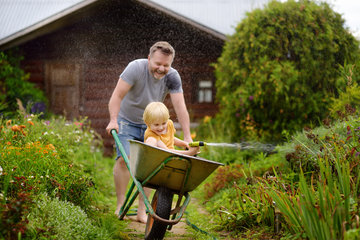Cultural transmission in women’s subsistence networks
Women’s foraging groups provide important opportunities for children and adolescents to learn crucial subsistence skills
Women’s subsistence activities are crucial for food provisioning and children’s social learning, but are understudied relative to men’s activities. New research among BaYaka hunter-gatherers in the Republic of the Congo provides unique insights into how women’s foraging networks have been important for producing and transmitting important cultural knowledge across generations.

Haneul Jang from the Max Planck Institute for Evolutionary Anthropology, and Daniel Redhead from the University of Groningen published a new study that shows how the composition of women’s foraging networks produces ample opportunities for children and adolescents to learn and teach subsistence practices. They worked with the BaYaka, who are one of the few contemporary foraging societies in the world. The BaYaka are relatively egalitarian, and individual roles in community politics and subsistence are not formally mandated. Therefore, individuals - including children - are able to freely decide when, and with whom, they participate in subsistence activities. BaYaka women go into the forest to gather plant foods, harvest mushrooms, nuts, yams and fish - all of which provide the foundation to the community’s daily meals.
Young children foraged mainly with their mothers and close relatives

By following BaYaka women into the forest each day and observing what they forage and who they forage with over 230 days, the authors present initial evidence on how women’s foraging is highly structured by age and gender. Key findings are that young children (in early childhood: between the ages of 4 and 6) foraged mainly with their mothers and close relatives, like siblings, while those in middle childhood (aged between 7-13) and adolescents (between 14-19 years old) foraged with unrelated community members of the same age or older. This shift across development provides new opportunities for older children to get more specialist knowledge from experts in the community or to practice their skills with friends. The mixture of ages of foraging group members also shows that the adults who arrange the foraging trips do not only choose to go foraging with other skilled adults, but would use this as an opportunity to teach children, and help care for other group member’s children.
In reference to the impact of these findings, Jang said: “Our findings provide some initial evidence that the changing preferences of children and adolescents to take part in subsistence activities over development are in part based on opportunities to learn important skills and cultural knowledge. When following the BaYaka women’s foraging trips in the forest, we indeed observed that young children were most likely to stay with mothers and other adult women, while older children and adolescents explored the forest with their peers or unrelated adults to practice, copy and learn foraging techniques”.
Middle childhood is a crucial developmental period for cultural learning
Older children - those in middle childhood - were important for bridging knowledge between young children and adolescents. These children preferred to go foraging with friends of a similar age and adolescent siblings. Older children were also seen with their younger siblings, who adolescents spent little time with. “Our results suggest that middle childhood may not only be a crucial period for learning from older children and practicing skills with peers, but is also an important developmental period for teaching more basic knowledge to younger siblings”, Redhead said. “These findings are in line with theory in cultural evolution which suggests that knowledge spreads faster between individuals of similar age, or through sibling teaching, than from parent-to-child teaching. Women’s foraging networks seem to be critical for providing opportunities for such types of learning”.
By focusing the study on women’s subsistence practices, findings provide a new perspective on the roles that women and children play in producing and transmitting cultural knowledge, highlighting that women’s subsistence activities have been contributing to the proliferation of human culture.













